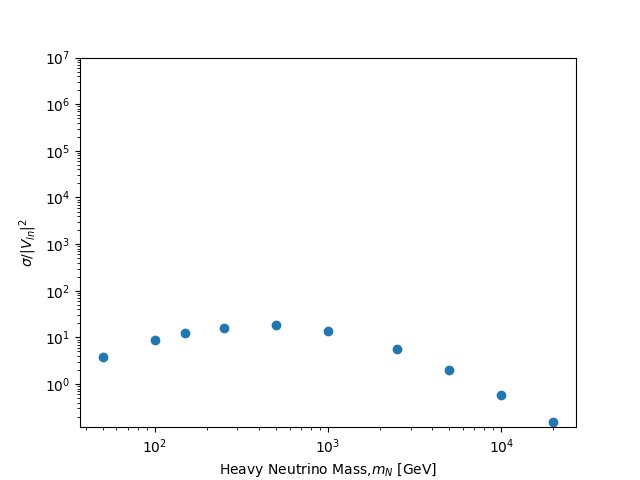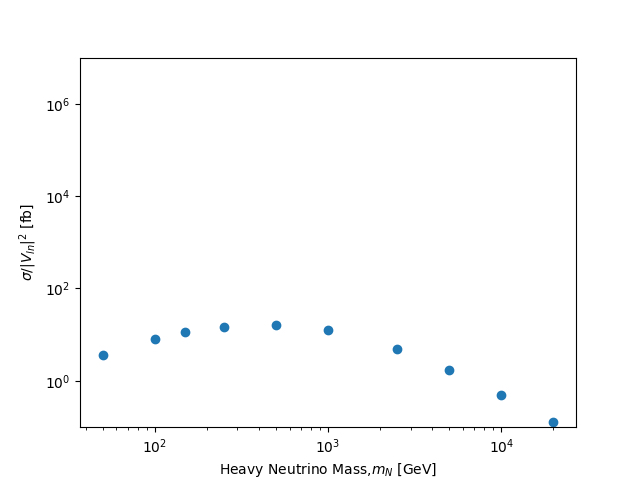Another week passed and as promised, I sat down in front of my computer and worked on the remaining part of the simulations for the
fifth installation of Citizen Science on Hive. The goal of the Citizen Science project being led by
@lemouth is to conduct a particle physics study on neutrino mass model at CERN's Large Hadron Collider (LHC). The simulated collisions we produce using MadGraph5 is composed of the signal well hidden in background events. In our current task, we focus on the simulation of the neutrino signal we aim to study. In the future, our goal is to design a selection strategy to determine whether a given event is kept or rejected, this will be dependent on the calculations of the event properties performed.
To move forward with this goal, we first manage to reproduce the plot from our
reference scientific article. At CERN, one of the experiments being conducted involve the colliding of two protons. Our concern are the constituent particles of these protons: the quarks . As these quarks are accelerated close to the speed of light, there's a given probability that these particles emit a W boson being sensitive to weak interactions. We are then interested in the new physics that happens as a consequence, the two emitted W bosons exchange a heavy neutrino
N, that leads to the production of two leptons of the same electric energy. In the our reference paper, it covers the scope of the production of two muons or two antimuons.
I was able to write my
progress report covering the calculations of the signal production rate at 13 TeV which corresponds to the collision energy of LHC Run 2. My previous result used neutrino mass values from 50 GeV to 10,000 GeV. The plot I was able to produce seems to follow the trend of the results from the reference paper. However, following the values from this
post by
@lemouth, I considered a different range of neutrino masses for the simulations. And for the remaining part of the simulations, we considered the collision energy of 13.6 TeV which corresponds to the LHC Run 3 that began a few weeks ago.
As observed in the figures above, there is not much difference between the plot for the two collision energies considered. However, from the table below, the corresponding cross section values of the neutrino mass values are different for the simulation results of 13 TeV and 13.6 TeV.
Signal rate dependence on the neutrino mass at 13 TeV
| Neutrino mass (GeV) |
Cross section (fb) |
| 50 |
3.5584 |
| 100 |
7.9337 |
| 150 |
11.2581 |
| 250 |
14.8646 |
| 500 |
16.1257 |
| 1,000 |
12.3694 |
| 2,500 |
4.9459 |
| 5,000 |
1.7002 |
| 10,000 |
0.4854 |
| 20,000 |
0.1254 |
Signal rate dependence on the neutrino mass at 13.6 TeV
| Neutrino mass (GeV) |
Cross section (fb) |
| 50 |
3.8313 |
| 100 |
8.6255 |
| 150 |
12.1733 |
| 250 |
16.2331 |
| 500 |
17.9871 |
| 1,000 |
13.9182 |
| 2,500 |
5.7143 |
| 5,000 |
2.0001 |
| 10,000 |
0.5758 |
| 20,000 |
0.1505 |
For this task, the simulation run took almost 2hrs since there were 20 runs in total performed. As everything is highly automated, aside from setting the parameters of the process, the output produced is only around 37mb.
That's it for the fifth installation of Citizen science project, as there will be a three week time off. I hope that I could use it to catch up on the reading materials related to what we are working on. :) And if this picked your interest on learning about particle physics. Feel free to join us! ✨








